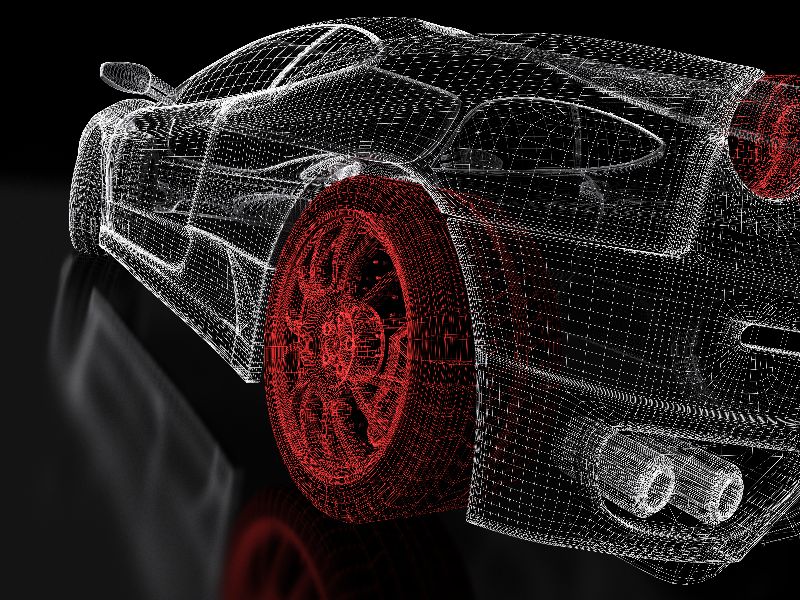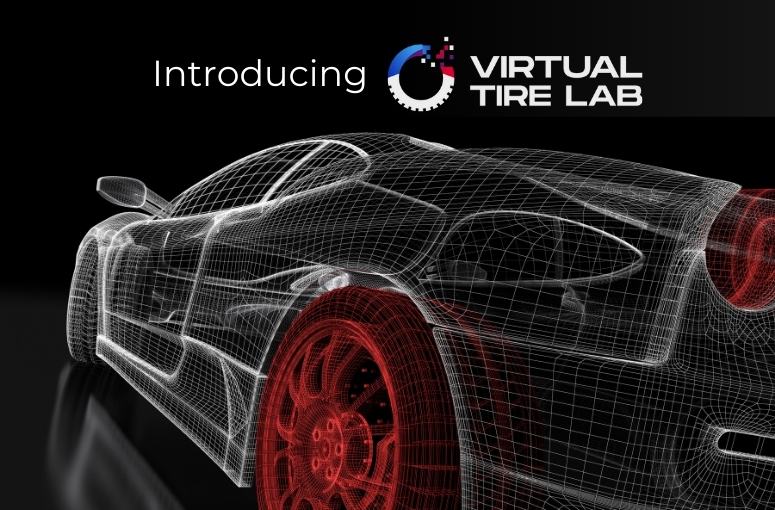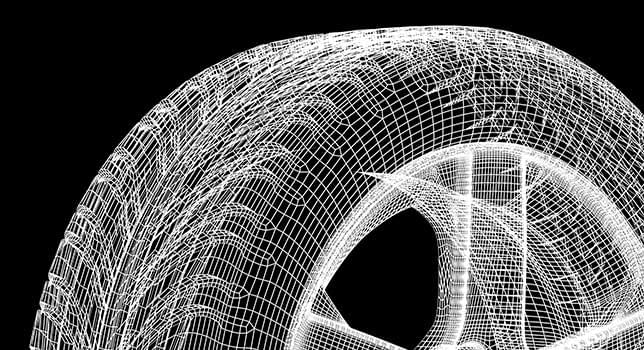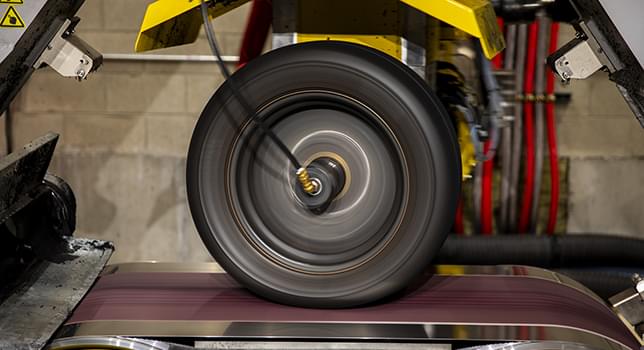Virtual Tire Lab, a strategic collaboration between Smithers and
Stackpole Engineering Services, offers a sophisticated digital platform poised to redefine tire and vehicle development workflows. Designed for precision and efficiency, this service integrates advanced tire testing with high-fidelity modeling, directly benefiting tire engineers, vehicle dynamics specialists, and simulation professionals.
This Q&A with Cliff Hodges, Technical Director, provides a focused look at the technical details and practical applications of the Virtual Tire Lab, and how it can assist tire and vehicle development engineers.
How are the foundational data and resulting tire models characterized for engineering fidelity within Virtual Tire Lab?
The cornerstone of Virtual Tire Lab's high-fidelity tire models is a rigorous, multi-faceted data generation process. It commences at Smithers' world-class Tire and Wheel Testing facility, where detailed physical tire measurements are captured. This includes precise
footprint analysis, comprehensive
force and moment evaluations, and dynamic testing such as
rolling resistance measurements. Stackpole Engineering Services then leverages this empirically derived data to develop highly accurate virtual tire models. The primary output is the MF6.2 UM14 Handling Model, capturing critical tire properties such as quasi-static (vertical, lateral, circumferential) stiffnesses, quasi-steady-state (pure lateral and longitudinal slip) characteristics, and transient responses, ensuring the models accurately represent complex tire behavior under various operational conditions.
What is the compatibility of these tire models with prevalent vehicle simulation environments, and what types of simulations do they support?
The Virtual Tire Lab's tire models are engineered for seamless interoperability with a broad spectrum of industry-standard commercial vehicle simulation software. This includes widely adopted platforms such as Dymola, ADAMS, CarSim, VI-CarRealTime, Simulink, CarMaker, AVL VSM, and SimPack. This extensive compatibility ensures that tire engineers and vehicle dynamics specialists can integrate these models directly into their existing simulation pipelines. The models robustly support a diverse range of simulations, encompassing detailed design analysis, predictive performance evaluation, and rigorous model certification across virtual prototypes. Their accuracy allows for precise assessment of vehicle response to tire inputs in various dynamic scenarios.
From a vehicle dynamics perspective, how do Virtual Tire Lab models enhance simulation fidelity and predictive capability?
For vehicle dynamics engineers, the Virtual Tire Lab models significantly elevate simulation fidelity by accurately representing the complex interaction between the tire and the road surface. This precise representation of tire forces and moments is paramount for predicting overall vehicle performance and handling characteristics. Engineers can conduct in-depth analyses of handling performance, steering response, braking maneuvers, and vehicle stability. Furthermore, these models are invaluable for the development and validation of advanced driver-assistance systems (ADAS) and autonomous vehicle (AV) features, where realistic tire behavior is crucial for sensor fusion, control algorithm development, and virtual testing of critical scenarios. The ability to convert these models into real-time variants also supports Hardware-in-the-Loop (HiL) setups and Driver-in-the-Loop (DiL) simulators, ensuring a consistent and high-fidelity tire representation across all stages of the vehicle development cycle.
What are the key engineering challenges or use cases that can be addressed by Virtual Tire Lab?
Virtual Tire Lab directly addresses several critical engineering challenges:
- Accelerated Development Cycles: It dramatically reduces the iterative physical prototype phase, allowing for more rapid design optimization and significantly shortening time-to-market for both new tires and vehicle platforms.
- Performance Benchmarking and Optimization: Tire and vehicle dynamics engineers can precisely benchmark diverse tire models and evaluate early-stage prototypes against stringent performance metrics and varied operating conditions. With an extensive tire model library covering everything from EVs to SUVs, engineers have a nice variety to choose from for benchmarking purposes.
- System Integration and Optimization: For tier suppliers of critical vehicle systems (e.g., suspension, braking, steering), the models enable early-stage understanding of tire-system interactions, facilitating optimized component design and integration.
- Reduced Physical Testing: By shifting more development to the virtual domain, the need for costly and time-consuming physical tire manufacturing and testing is reduced, contributing to both cost efficiency and sustainability objectives.
What specific technical advantages does Agile Tire® software offer for data manipulation and model validation?
Agile Tire® software serves as the analytical interface for the Virtual Tire Lab's models and underlying test data. It empowers engineers with robust capabilities for data manipulation, visualization, and model validation. Some of the key technical advantages include:
- Data Review and Analysis: Facilitates in-depth review of raw tire test data acquired by Smithers, alongside the synthetic data from Stackpole's models.
- Model Validation: Enables direct comparison of virtual tire model predictions against empirical physical test data, allowing engineers to verify model accuracy and identify areas for refinement.
- Customizable Analytics: Provides tools to generate and customize 2D and 3D plots, create tailored workbooks, and perform comparative analyses.
- Parameter Manipulation: Allows for real-time adjustments and evaluation of tire parameters within the software environment during analysis sessions.
- Seamless Export: Ensures compatibility for exporting refined tire models in formats suitable for various vehicle simulation platforms, streamlining the workflow from analysis to application.
For more detailed technical specifications, to explore subscription options, or to request a demo, visit
www.virtualtirelab.com.





